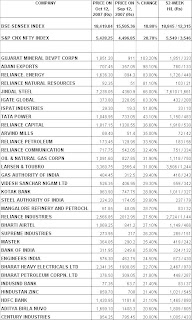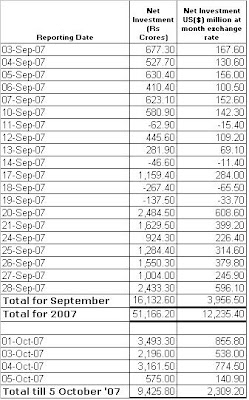Airlines An industry that Capital intensive with high asset replacement costs. Low/no customer loyalty
high fuel prices, competition from low cost carriers make it very competitive.
Bankruptcy protection and cyclical downturns where no one makes money are other negatives.
Hotels
Buy stocks when occupancy is low & the business environment is weak
Steel/ Aluminium/Copper and other metalsBuy when industrywide financials are weak, and bankruptcy is high.Excess capacity exists and product prices are low. Metal ore producers, smelters,mill owners are worth a look at this stage.
PharmaceuticalsLook at the new drug pipline, new drug research costs and possible failure risks.
For generic drugs ( copies of the original patented drugs ) look at patent expiry, legal costs,
and very competitive pricing of generic drugs on patent expiry.
MiningBuy when mineral prices are weak.
Mining equipment stocks - trucks, dumpers, crushers, elevators, earth moving equipment, are the various ancillaries that are dependent on this sector.
Focus on hotels and real estate in mining areas during the downturn
And Roads, highways and bridges in mining areas during the upturn.
Oil and Gas
Rising oil prices benefit oil services industries such as drillers, rig operators,
Offshore supply vessels and tugs, marine engineers, welders, offshore helicopter
Companies, oil pipeline manufacturers and contractors.
Petrodollars from rising wealth in oil producing nations seek global investment avenues. The governments of Dubai and Qatar are a case in point. Oil producing nations see real estate booms, increased domestic consumption, and consequently inflation, as oil prices rise.
Rising Oil prices are positive for alternative energies, like wind energy, solar energy, hydro power etc, as their commercial viability vis a vis oil improves.
Oil dependent BusinessesA number of industries depend on raw materials/ inputs that are derived from crude oil.
These include
Chemicals
Petro-chemicals
Paints (oil based paints, the raw material titanium dioxide)
Tyre industry (carbon black)
Fertilizers (fuels- naphtha and natural gas),
Airlines ( Aviation Turbine Fuel)
Truck/ Road freight ( Fuel costs)
Government Monopolies and Policies:Relevant to sectors such as oil and gas, pipelines, freight transport, telecom, Railways, foreign direct investment.
Liberalisation policies in emerging economies
Investing in Agricultural Commodity related stocksBeware the cyclical nature of commodities, and study the demand supply situation well.
Known also as soft commodities, these include cereals such as wheat, corn & soy; cotton, sugar, rubber.
Rising prices benefit producers of seeds, fertilizers, crop protection, and farm equipment like tractors, & harvesters.
Agricultural economies benefit greatly, as was the case with sugar in Brazil recently.
Industries that are negatively impacted
--By a cereal crop boom include the poultry and meat industry; milk and dairy industry,
--By a rise in rubber prices include the Tyre industry and the auto industry.
--By a rise in cotton prices include the textile industry.
--By a rise in sugar prices include confectionery, beverages etc
Investing in Infrastructure related stocks in Developing EconomiesLooking to benefit from rising infrastructure investment in developing economies requires a long term investment horizon.
Projects can get delayed, clearances may take time, and the resulting cost overruns erode investment return
Industries that benefit from rising infrastructure investment include
Trucking, construction machinery and cranes, steel, cement, construction contractors & road development companies.
Power and electricity generating equipment, transmission and distribution equipment, transformers , high tension cables (applicable to upgrading of infrastructure in developed countries eg. power grids etc)
Airport/Seaport development, logistics, packaging and forwarding, cold storage.
























